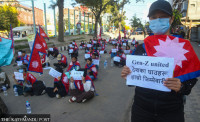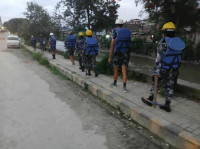Valley
Analysts sceptical on communist unity
The unification of CPN-UML and CPN (Maoist Centre) makes new entity, the Nepal Communist Party, the largest and most powerful communist political party in the country’s history.
Anil Giri
The unification of CPN-UML and CPN (Maoist Centre) makes new entity, the Nepal Communist Party, the largest and most powerful communist political party in the country’s history.
The merger took seven months, and in this period, the two parties contested two elections with a joint manifesto and registered a formidable victory.
After the merger last Thursday, the new party now wields power in all three tiers of the government with overwhelming majorities. Citizens have many expectations from this union.
Nepal’s communist parties have a history of break-ups. Many political observers doubt whether this unity would last. Political scientist Professor Krishna Khanal points to the timing of the merger—ahead of Prime Minister KP Sharma Oli’s visit to China.
“It was said that the unification would happen before PM Oli visited India. The merger was suddenly announced after Indian Prime Minister Narendra Modi visited Nepal and ahead of PM Oli visit to China,” said Khanal, linking the geopolitical factor with the merger.
In the unification process, party organisation and office-bearers got precedence more than ideological principles; a communist party cannot overlook this aspect. Private talks between Oli and Dahal prevailed, rather than a collective ideological discussion.
“This unity has left a huge hole in the Nepali communist set-up,” said Khanal. “We don’t know who will fill the vacuum of ‘radical communism’. Those who fit in the space would win the next elections.
“I see a greater degree of corporatisation of the communist party after the merger. Prime Minister Oli publicly said the new party would uphold democratic norms and values.”
Even left-leaning analysts believe the unity between the two communist parties is based on political compulsion rather than a sound ideological base that a communist party stands on.
“The unity was possible as both parties agreed to accept democratic socialism,” said political commentator Shyam Shrestha.
“There is a greater understanding between Oli and Dahal for running the government for five years. Had ideological issues dominated the unity process, it would have been an organic unity. This was lacking during negotiations,” said Shrestha.
The merger has created room for alternative political or ideological discourse within the new communist party, which the factions led by Oli and Dahal lacked, he said.
“When Oli was the party chair, we hardly saw alternative space or debate in the party,” said Khanal. “Now we can expect that space with Prachanda, who is the co-chairman of the new party. If they attempt to set up a monolithic communist party, it will be bad for the nation and democracy.”
Oli and Dahal finalized major deals related to the merger during their private talks on sharing power. This is dangerous.
“All negotiations should be open and there should be maximum debate and discussion on ideological matters, which was clearly lacking all along. We can easily sense that the heart of Oli and Prachanda was united and became one, but others were left in the lurch,” said Shrestha.




 19.12°C Kathmandu
19.12°C Kathmandu










